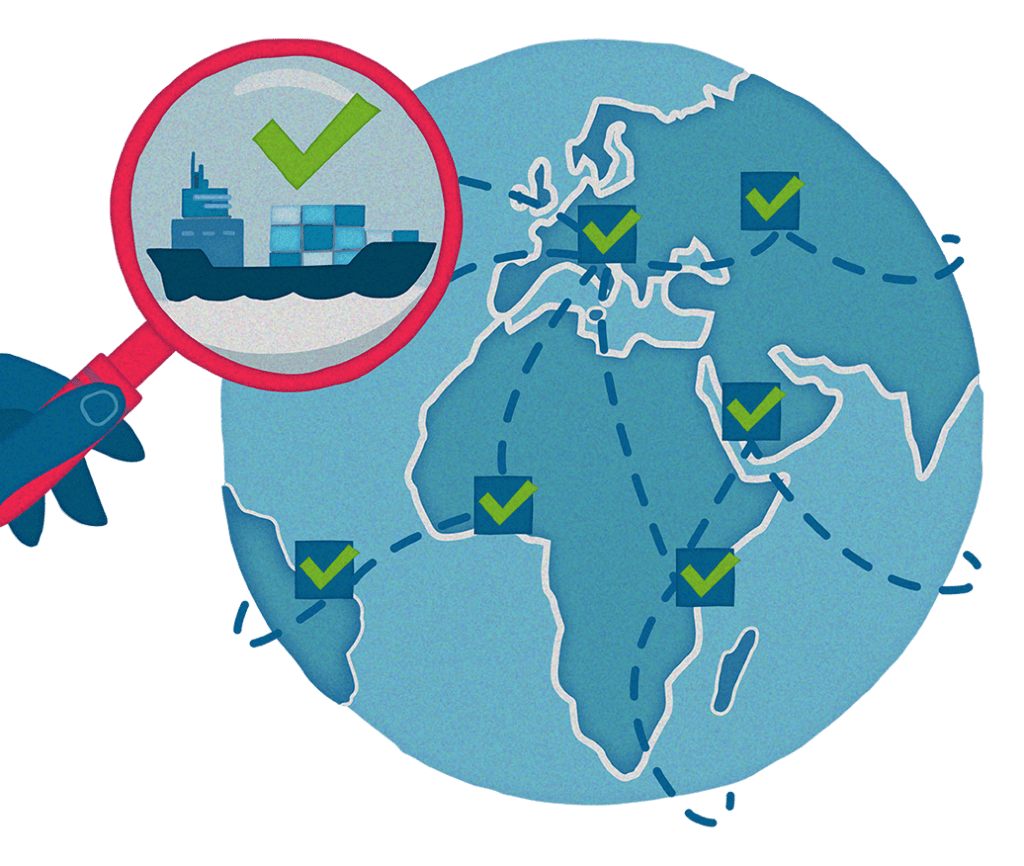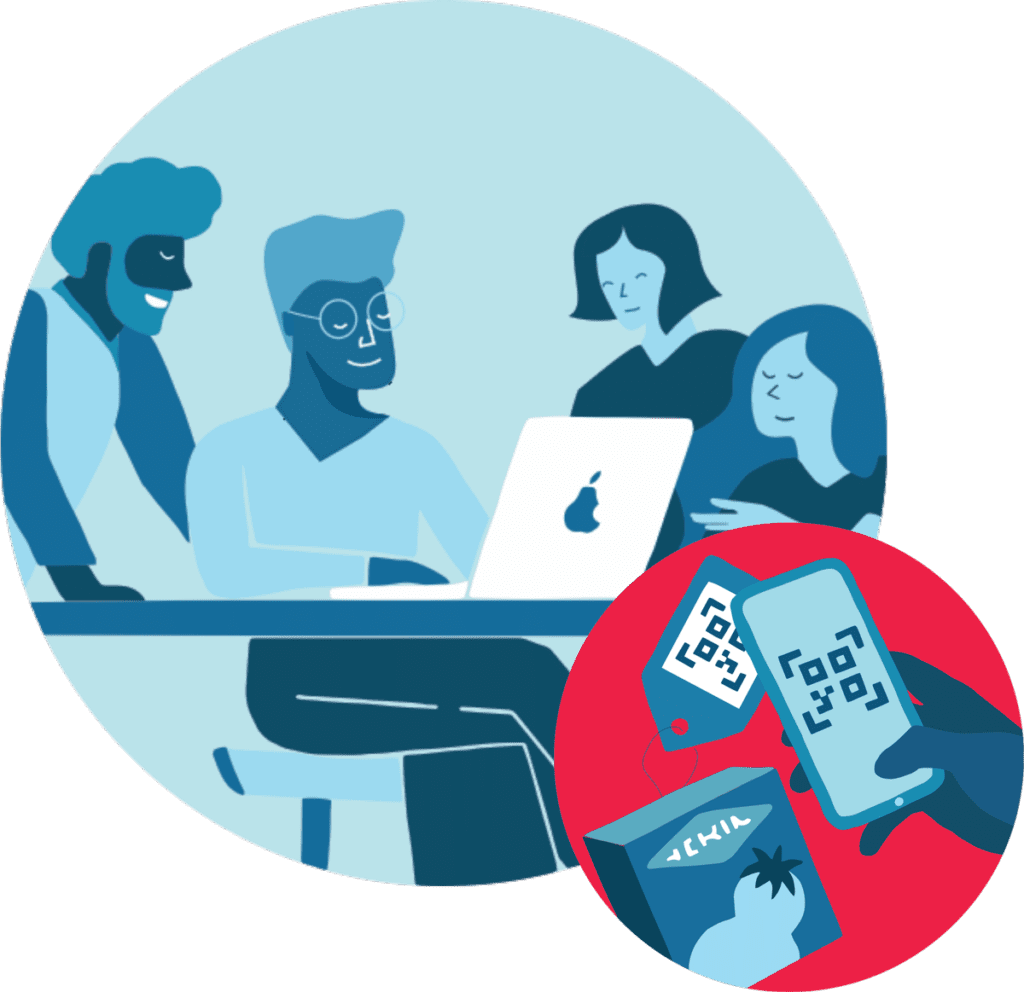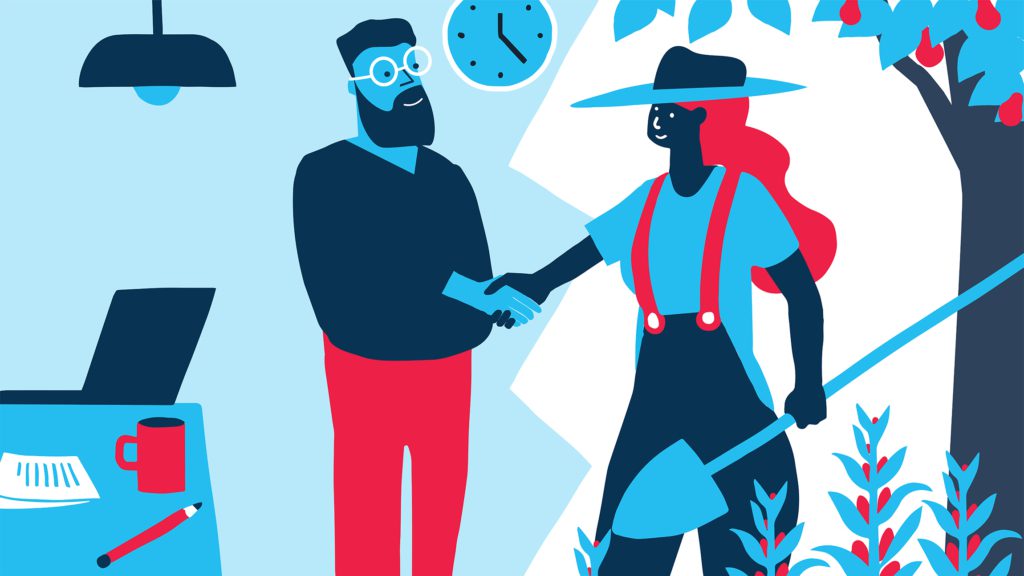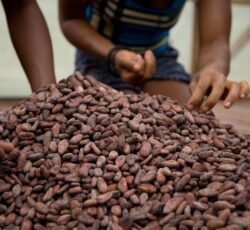Embarking on your transparency journey
As a long-term partner for frontrunning companies looking to transition towards fair and sustainable supply chains, we offer support every step of the way.
Getting there together
Fairfood is a long-term partner for companies that want to do better, but need assistance in doing so. As we embark on your sustainability journey together, we utilise Fairfood’s expertise, solutions, tools and network along the way.
Although no two sustainability journeys are the same, we have defined 4 overarching stages: design, develop, deploy, deliver.
Below, we describe the steps that our partners usually take within those stages.
This video cannot be shown because you didn't accept the cookies.
Change choice

The steps of your journey

Step 1: Designing your journey
In an elaborate workshop, we set the scope of our joint project. We define goals and formulate the sustainability claims that your company wants to make and prove. Think: living income reference price paid or carbon-neutral.
Step 2: Identifying risks and opportunities
Next, we build understanding of the issues that may arise in your value chains. By mapping your supply chains and identifying key stakeholders, we start uncovering the sustainability issues that occur in the production of your products. This step may include on-the-ground field research, which in the past meant doing living income studies or farmer focus groups.

Step 3: Planning interventions
With new and improved knowledge of your supply chain, we design the interventions needed to tackle the issues that were uncovered. For this step, we rely on our experience from previous projects and on our extensive network, building strategic partnerships to help you achieve your sustainability goals.

Step 4: First-mile digitisation for financial inclusion
The farmers you work with can connect to supply chains through digital solutions that ultimately enable better access to markets and finance. We prototype fair value distribution models that lead to living incomes and wages, while incentivising high-quality data collection and sharing.
Step 5: Tracing your products
As the interventions are being put in place, we trace your products from verified smallholder farmers through our end-to-end traceability platform, Trace. This is a prerequisite in associating sustainability data with your products and backing up your claims on living incomes, fair value or carbon-neutral production.
Step 6: Going transparent
Supply chain transparency ultimately serves corporate accountability. By making your supply chains transparent, we put a spotlight on farmers’ and workers’ rights, allowing you to publicly back up the promises you make about social and environmental sustainability.
Step 7: Adding value
This step goes hand-in-hand with step 6: we see value in transparency, which is why we help you market your transparent product story and sustainability claims. After all, at this stage you will have quite the story to tell. The consumer interface of our platform Trace is one of the channels you may use for telling that story – see for example how Trabocca is using the interface. Ultimately, this is value that we want to get back to the farmers.



